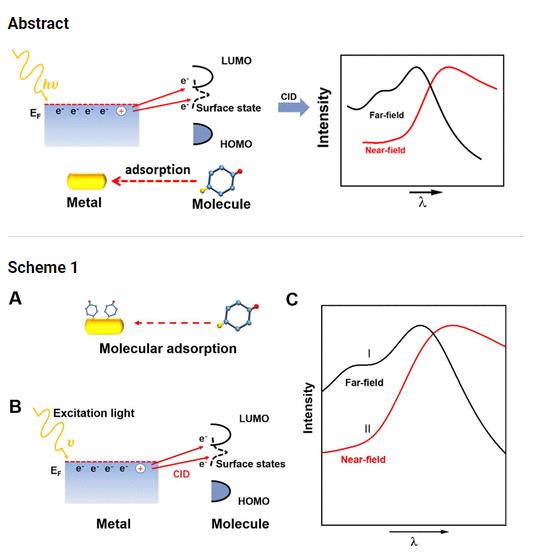Optimal Excitation Wavelength for Surface-Enhanced Raman Spectroscopy: The Role of Chemical Interface Damping
作者:Zhu Shuyi;Bao Haoming;Zhang Hongwen;Fu Hao;Zhao Qian;Zhou Le;Li Yue;Cai Weiping
期刊:JOURNAL OF PHYSICAL CHEMISTRY LETTERS
卷(期)页:卷12 期45 页11014-11021
全文链接:https://pubs.acs.org/doi/10.1021/acs.jpclett.1c03535

期刊:JOURNAL OF PHYSICAL CHEMISTRY LETTERS
卷(期)页:卷12 期45 页11014-11021
全文链接:https://pubs.acs.org/doi/10.1021/acs.jpclett.1c03535

The optimal excitation wavelength (OEW) for surface-enhanced Raman spectroscopy (SERS) is generally close to that of the local surface plasmon resonance (LSPR). In some cases, however, the OEW is significantly longer than that of the observed LSPR. Its origin is still unclear and controversial. Here, we propose a chemical interface damping (CID)-based mechanism and reveal the origin of the OEW's deviation from the LSPR by simulation and experiments using gold nanorods as the model material. Simulations show that the molecular adsorption induces CID, which causes a red-shift of the near-field peak relative to the far-field one, and that the chemical adsorption of target molecules on the plasmonic metals with enough strong CID would induce a significant red-shift of the OEW, even to the region far beyond the LSPR. Finally, we experimentally confirm the validity of the proposed CID theory and demonstrate the significant influence of the CID on the OEW during SERS measurements.
